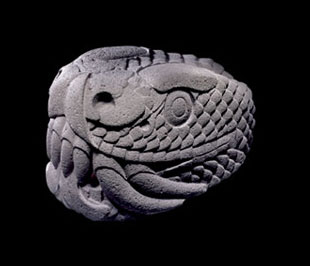|
























|
|







The Glory and Richness of the Aztec Empire
The greatness and power achieved by the Aztec empire occurred in the Late Postclassic period, the final stage of ancient Mexico that spanned the 13th to the early 16th centuries. This era had its counterpart in 15th-century Europe in the intellectual movement in the sciences and the arts known as the Renaissance.
Of the various factors involved in the the Late Postclassic historical process, the most important were the messianic vision of dominion over the universe, military supremacy, and hegemonic alliances. The Aztecs ended up imposing their political ideals and dominance on longtime allies and other neighboring peoples.
In 1325 the Aztecs founded their capital, Mexico-Tenochtitlan, in the altiplano region in central Mesoamerica, a geographic area featuring lakes and mountains. This was the political, religious, and cultural center of the Aztec empire. From this city, it extended its supremacy over an immense territory, reaching the borders of the Tarascan empire, the dominant power in West Mexico. Much of the history of the final days of Mesoamerica revolves around the military confrontation between these powerful indigenous empires.
In tandem with the Aztec empire's political dominion, an international artistic style flourished, permeating much of Mesoamerica and imposing forms and symbols comprehensible to very different peoples. This common artistic language was used to overcome linguistic barriers.
Serpent head. Aztec, ca. 1250–1521. Stone, 90 x 92 x 155 cm. Museo Nacional de Antropología, INAH, Mexico City. Photo Michel Zabé, assistant Enrique Macías.
|
|